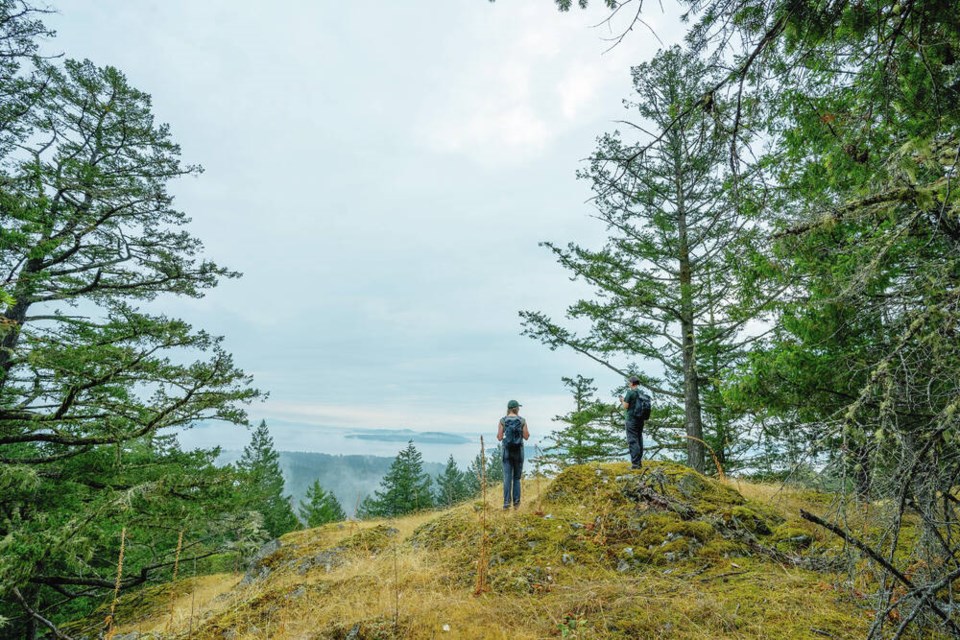The Nature Conservancy of Canada has acquired 161 hectares on Salt Spring Island, protecting it from potential future development and logging.
The property on Reginald Hill at the south end of Salt Spring was purchased for $9 million from a family who wanted the land protected and worked with the conservancy, which used federal funding and donations.
The Salt Spring property was considered a prime candidate for subdivision and development, said the conservancy.
“I am thrilled that the Nature Conservancy is providing protection for this super-special land in perpetuity, ” said Nancy Beach, a member of the family that owned the property. “The peaceful walk up the hill to the awe-inspiring hilltop view is undeniably enriching, and it was our parents’ dream to have the nature of this land preserved forever.”
The new conservation area features a maturing coastal Douglas-fir forest, Garry oaks, rocky bluffs and multiple wetlands. The conservancy said the woodland ecosystems are among the most imperilled in Canada and are vital habitat for several at-risk species, including the common nighthawk (threatened), barn owl (western population threatened) and a lichen known as peacock vinyl (special concern).
The new Reginald Hill Conservation Area is now part of a larger landscape of undeveloped and protected land, bordered by the Tsawout First Nation’s reserve lands, a municipal park and land protected by conservation covenants. It is also near two provincial parks and two conservation areas already held by Nature Conservancy of Canada.
The forest on Reginald Hill is regenerating from selective logging in the 1940s and a small amount of eco-forestry in the 1990s. Nearly a third of the trees in the area are estimated to be older than 100 years.
The acquisition was funded in part by the federal government through the Canada Nature Fund. Additional funding was provided by the Gerald A. Cooper-Key Foundation and the contributions of about 140 individual, corporate and foundation donors.
The coastal Douglas-fir zone, like what is found on Reginald Hill, is the smallest and most at-risk biogeoclimatic zone in B.C., according to the nature conservancy. Within Canada, it is found only on southeastern Vancouver Island, the Gulf Islands and a small part of the mainland.
Susan Hannon, an ecologist and conservation biologist on Salt Spring Island, called the acquisition a huge win for the Island in the face of climate change.
“By treating the land with respect and care, we can protect the sensitive habitats and species at risk in perpetuity, so our descendants can enjoy them,” she said.
>>> To comment on this article, write a letter to the editor: [email protected]



